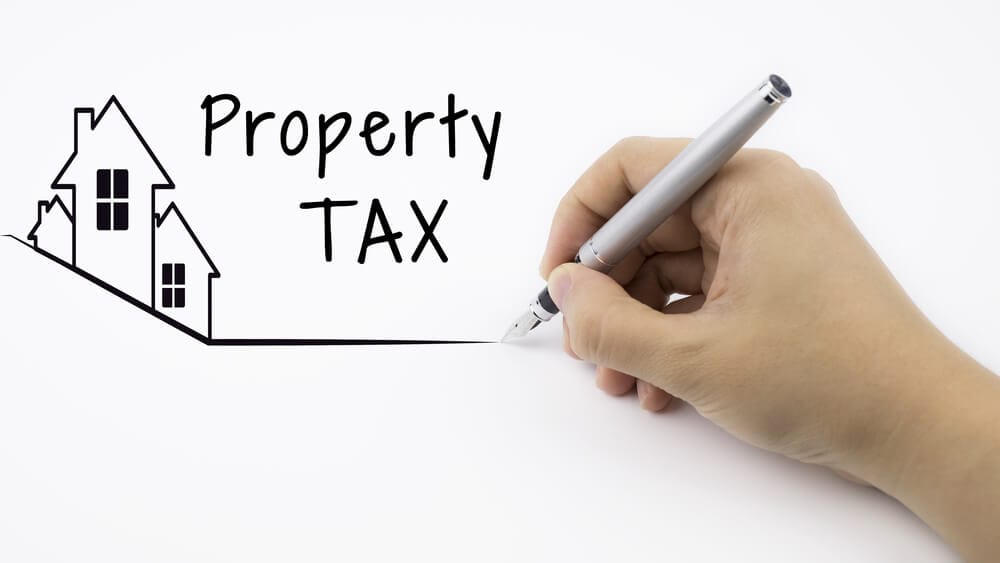No one really enjoys paying taxes yet without taxes we wouldn’t enjoy the public services taxes support. We all know that but still if we had our choices we’d probably say we want both public services but no taxes. Yet that’s not really how it works, is it? Consumers really don’t pay much attention when they pay sales tax at the grocery store, it’s included in the total bill and expressed as a percentage of taxable items being purchased. Income taxes are paid annually both to the State of California and the Federal Government. Real property is also taxed and your real estate is considered real property. Property taxes are billed annually and paid in two installments.
But have you ever wondered how property taxes are actually calculated?

Property Tax Factors
Property taxes are based upon the assessed value of your home. When you purchased your home the sales price was recorded and the County uses that number when they send your first property tax bill. Property taxes are calculated multiplying the assessed value by the tax rate first by using the Base Rate of 1.00%. This base rate was first established by the State of California with the passage of Proposition 13 in 1978 which capped the base rate at 1.00%. Prior to Prop 13, property taxes were rising so fast and so high that property owners were being forced out of their homes either by selling or forfeiture. Prop 13 also limits the assessed value of any real property cannot increase by more than 2% per year.
Property taxes will vary based upon the location of the property as well. The tax in Tax Rate Area of Encinitas for example is 1.05817% while in San Diego the rate is 1.17432%. These values are used in conjunction with the assessed value to arrive at your annual tax bill.
Value
Okay, so the County knows what the value of your home is because you and the seller agreed to a market price. A price that was the highest you were willing to pay and the lowest the sellers were willing to accept. County records will show the square footage of the home, any other permanent structures on the lot and the square footage of the lot. Over time, as permitted additions are made to a property, those too will be recorded.
When a property owner makes improvements to a home and obtains the necessary permits, the County notes the additional square footage and will recalculate your property tax bill noting the additional square footage and improvements made. The county tax assessor will review the additions made as well as compare your property with recent sales in the area and their recorded assessed values. The county won’t send an appraiser to your property but will use recorded data as a basis for your assessed value.
Let’s say your property tax bill was pretty much the same for the first couple of years but you have noticed recently that homes in your neighborhood are selling faster than they used to and you’re sort of surprised at what homes in your area are selling for. A couple more years go by and you’ve really not noticed your tax payments because they’re included in your mortgage payment as impounds.

The Numbers
You’re considering moving because you now need another bedroom. You look at the market but are surprised to see what homes very much like yours are selling for these days. Besides, you’ve got a pretty good interest rate on your loan right now and you’d be just as happy to keep it. So, you decide to add on another bedroom and forego the moving process altogether. The new master bedroom is another 250 square feet and the added bath is another 100 square feet for a total addition of 350 feet. Now the total square footage of your home after completion is 2,850 square feet.
When you first bought your home it was 2,500 square feet and you paid $500,000 for it, or about $200 per foot. If property values over the past few years remained the same in your neighborhood and there was no new indebtedness incurred by your city or the county, the newly assessed value would be $200 times $2,850, or approximately $570,000. If the tax rate is 1.0% on the net value of your home, the newly assessed tax is $5,700 and another .12222% for voter approved bonds, or $696 for a total of $6,396. However, if the property being assessed is your primary residence, there is a homeowner’s exemption of $7,000. Using this example, the assessed value is then $563,000, not $570,000. For all other real property you own, it will be assessed without the $7,000 exemption.
We realize this is a lot of numbers and sometimes too many calculations can be an overload of data but property taxes really aren’t that complicated when you break them down and understand how your assessed value is arrived at. You can expect your property tax bill sometime in early October of each year with the first installment due November 1 and become delinquent beyond December 10th. Your next installment is due February 1st and turns delinquent after April 10th. If payments are delinquent you can expect to pay an additional 10% penalty.
Not many states break property tax bills up into two installments which makes it easier on property owners to pay when due. To make it easier still, property owners elect to impound their property taxes and let the lender take care of them when due, making sure the taxes are paid on time, every time with no late payments and no penalty charges. If you don’t currently impound for property taxes but would like to, your lender will be more than happy to set up an impound account for you. You will then “pay” your taxes monthly instead of once per year in two installments.


